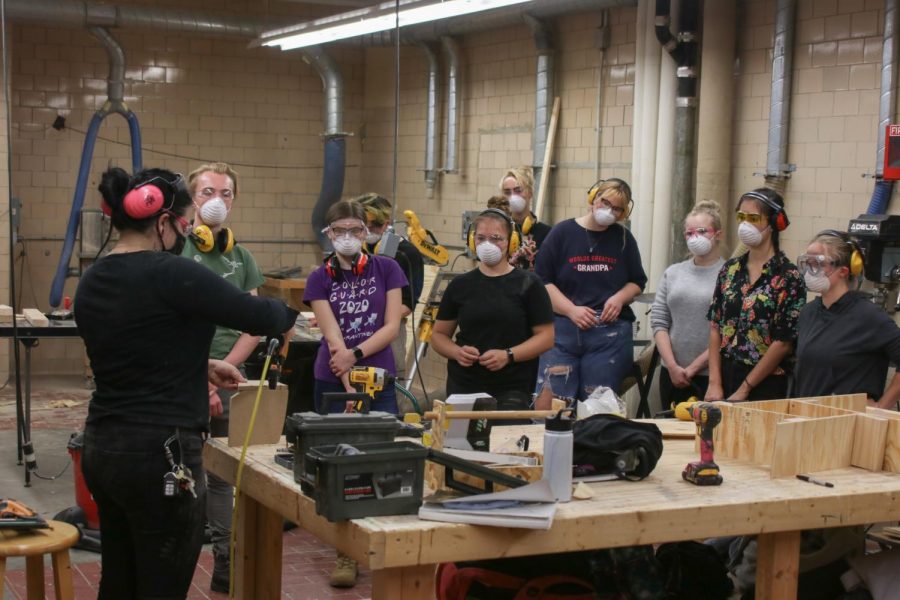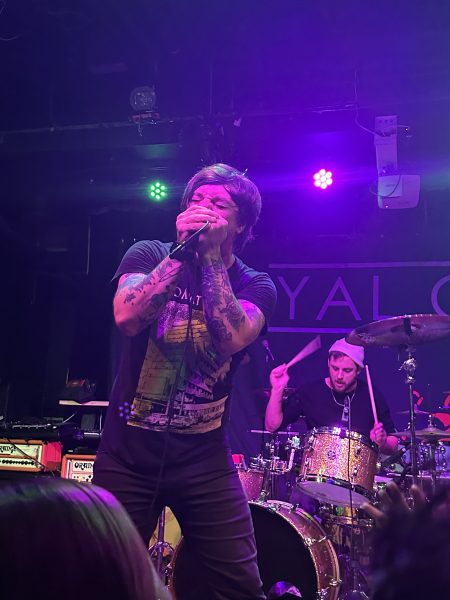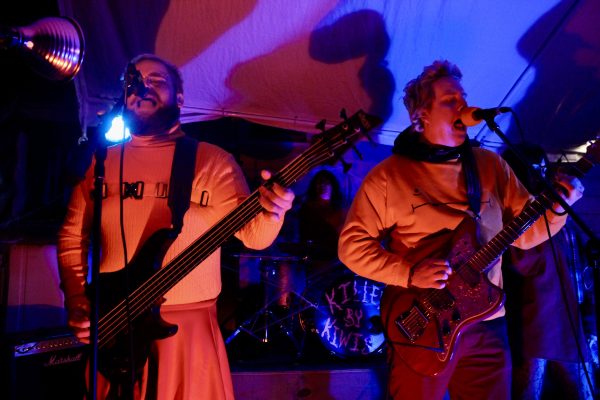The studio arts live on
Fine Arts professors and students have been getting creative and productive when it comes to class.
Lauren Thompson
Professor Allison Baker provides instruction and demonstration for group of students. Students must wear masks along with their usual goggles to take part in the
in-person course.
October 14, 2020
The Department of Studio Arts and Art History has been working to provide students with as close to a normal studio experience as possible amid Hamline’s first full semester during the COVID-19 pandemic. While wearing masks and practicing social distancing, students have been able to return to creating and collaborating within a studio environment. Beginning and Advanced Sculpting Professor Allison Baker is grateful for the chance to still see her students.
“I’m so happy to be back on campus. It’s just so nice. To see my students again, it was really hard in the spring when we sort of left so abruptly,” Baker said.
Students have also been given chances to collaborate and help out their community.
“I can say one of my favorite moments while we were all shut out from COVID[-19] is when I was helping studio arts alumni sculpture with the Little Earth project. It’s a Native American community housing organization,” Baker said. “I sent a call out to a bunch of my students and probably like a third of my sculpture class in the spring showed up to help at the food pantry, which was just really amazing.”
Baker also expressed admiration for her students’ abilities to look out for and take precautions around one another.
“I’m so impressed with how the students were handling it and really being conscientious of each other and keeping everyone safe,” Baker said. “I always tell the students that there’s one of me and sometimes up to twenty-one of them. So I can’t physically watch everyone all the time and keep everyone safe.”
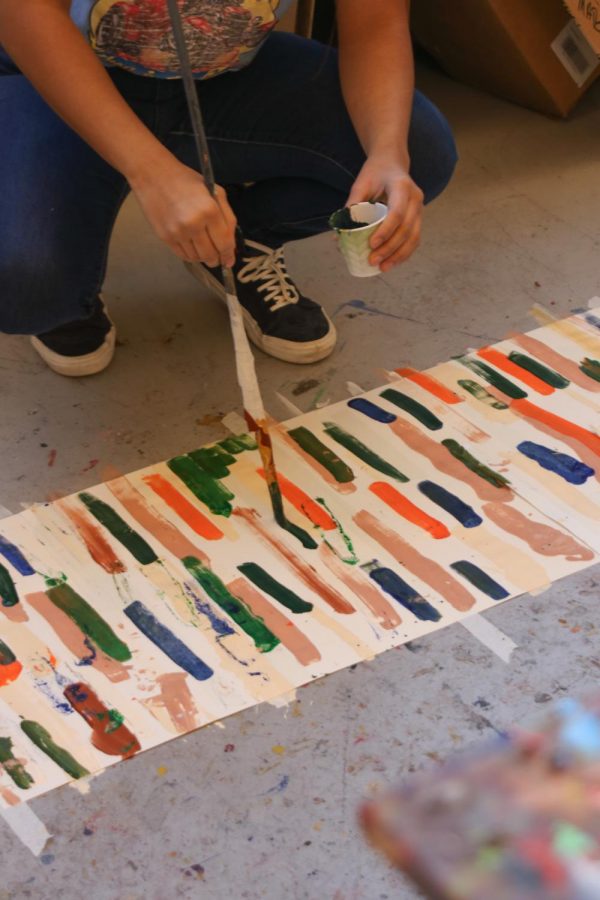
A student paints on the floor with an elongated paintbrush. Professors are working
to give students a studio experience.
Professor Andrew Wykes teaches Drawing and Beginning Painting and mentioned that navigating the current situation is a continual learning process.
“Everyone’s trying to find their way. Hopefully, we’ll never have to do this again. Maybe next semester we will, but after that who knows,” Wykes said.
Professor Wykes’ class has sixteen students in total. Half of the class meets on Monday, while the other half meets on Wednesday. This is done to make sure the amount of people in the studio is minimized.
Wykes also said that in-person learning with the use of safety measures is a good way to keep students connected to their work, as well as being a good source of interaction for students who spent the summer quarantined.
“I think the main thing in my mind is that students need to be in contact with each other. Being isolated is not good for their mental health. I think it’s terrible that everyone has to be online and isolated,” Wykes said.
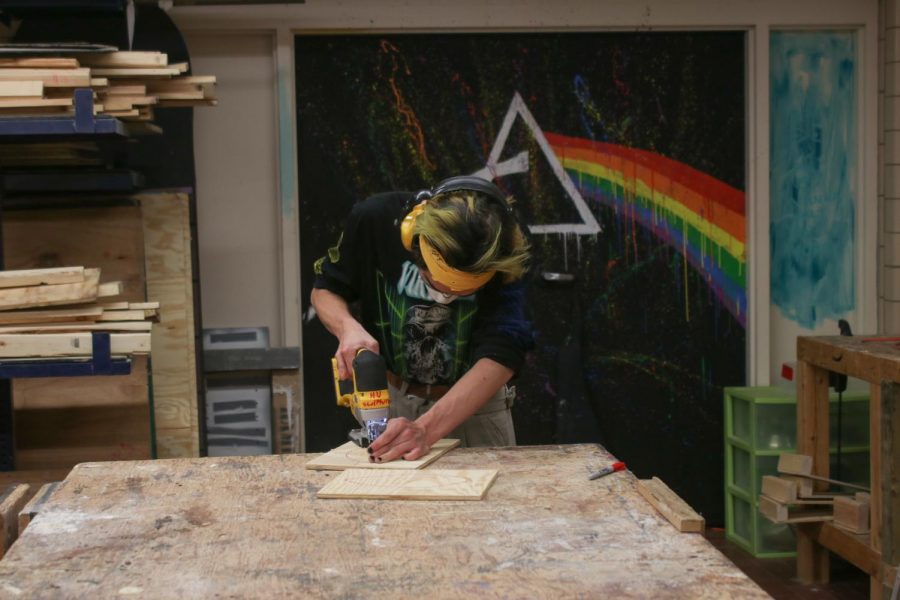
A student uses a hand-held power tool to cut, shape and screw plywood. Equipment for many fine arts courses is not accessible for students at home.
Wykes added that he wants students to be able to access materials and information to help them advance in their understanding of the course.
“To communicate this type of work, you really have to do it in person. You have to be able to show examples. You have to show enthusiasm. You have to be in there with them. You know each student has to be able to see what the other student is doing very much is learning from each other,” Wykes said.
CORRECTION: A previous version of this story referred to the department title as “Fine Arts” rather than “Studio Arts and Art History.”

